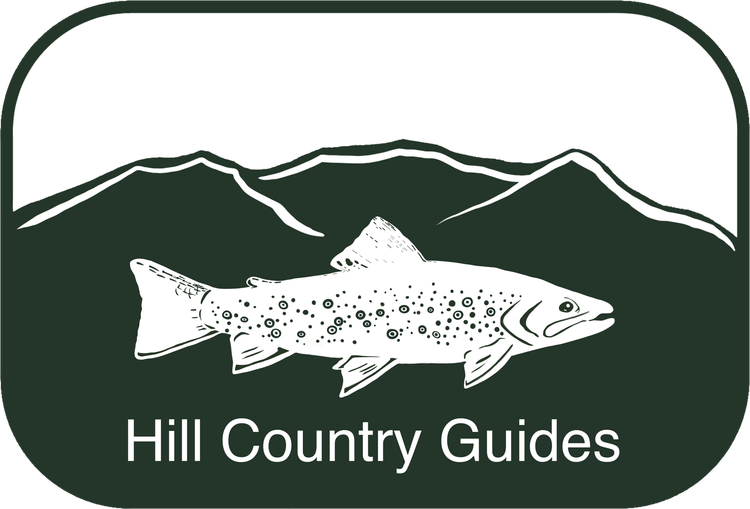Things have certainly turned a corner up here over the last two weeks. Typically by late August we have as many fall like days up here as we do summer days. This is the pattern we have been seeing as of late, with rain and cooler temps about half the time, and warmer days with highs in the 80’s the other half the time. This combination of cool and warm days really energizes the trout. Colder water and higher flows coupled with hatches spurred on by warmer days combine to send trout into a feeding frenzy.
Client Andrew Forauer with a nice hopper eater from a recent float trip.
Bugs and such:
We continue to see daily baetis hatches which fish are eating both on the surface and underneath. The andro and tribs are also still seeing good morning black caddis hatches and we’ve done well fishing foam emergers both in the film and under an indicator with a small split shot. On warmer days we’ve been seeing flying ant nuptial flights. Trout are keyed on these ants any time water temps are in the mid 60’s or lower. We’ve mostly done well with the larger female ants size 16 but a good warm day in the evenings will see fish transition to the male ants in a size 20 or smaller. In addition to ants, the hopper fishing has also been great, specifically on warmer windy days after a cold rain has cooled water temps. We did well on hoppers from about 11 am to 2pm yesterday.
A fine wild brook trout caught exploring some new beaver ponds with my son Ellis on my back!
Our guide Tom Freedman took a stomach pump of trout on the Andro during our last cold rain and found them full of Isonychia nymphs. This hatch will become more constant over the next week as water temps drop on the Andro. Fishing a size 12 purple pheasant tail or zug bug will do the trick as will a purple peacock and grizzly soft hackle when fish are actively feeding on the swimming nymphs. I like a purple haze or purple comparadun for the dries. I talk a lot about Isonychia as being one of our most consistent and productive hatches. This bug will be important from now through early October and can provide some of the best big river dry fly-fishing opportunities of the year. It is convenient that Iso’s hatch mid-day anywhere from about 10am to 5pm. In addition to Isonychia be ready for fall golden stonefly hatches from now through September as well as October caddis. A size 12 orange stimulator or orange foam EHC can sometimes out fish the Iso dry as fish key in on this less abundant but juicy bug.
A fine double bow brown caught this week on a double nymph (black caddis and baetis) rig by client Parker Coleman!
Looking forward:
The ant flights will subside with the last warm humid days of September. We’ll start seeing more BWO’s mixed with the Isonychia’s by early October. At this time fishing a size 12 Iso dry coupled with a smaller BWO can be a great dry fly strategy. Flows on the Andro just bumped to 1800 today and should remain at prime fishing levels through October. It does not look like we will see minimum flows at all this fall even if we get little rain. Small stream fishing will remain productive with orange stimulators and hoppers until about mid-September. From there we seem to do better on the slower lower elevation streams where wild brook trout are feeding voraciously before the spawn. Hunting for bright brook trout among bright foliage in late September and Early October is one of our favorite past times. Fishing brightly colored streamers or attractor dries like the Royal PMX typically does well through the end of the open season.
This salmon ate a small Baetis nymph mid-morning. We typically start seeing more salmon as fall progresses.
Availability:
We still have some prime-time dates available this fall. Nate has Sept 7, 13,14, 19, open at the moment and we have other guides available other dates. We also have more dates after the regular trout season closes on October 15th. Don’t forget we still have great fishing on the lower Andro through at least mid-November and from Late October until Ice in we will again be offering Pike trips. There are few freshwater fish that produce the adrenaline rush of an Adult Pike inhaling your 6”-8” streamer. We are addicted to hunting Pike and look forward to sharing this addiction with you! Give us a shout if you want to get on our calendar for this fall.
Tight Lines,
Nate










